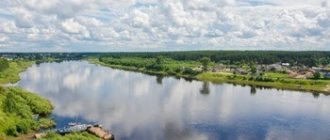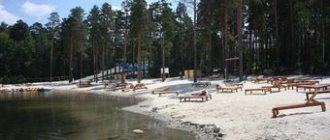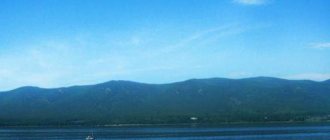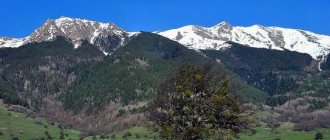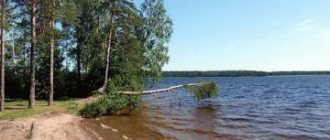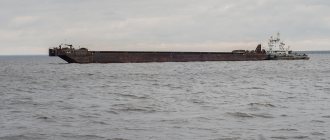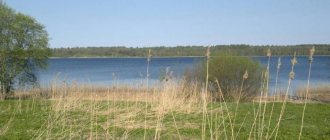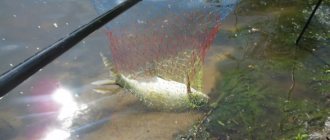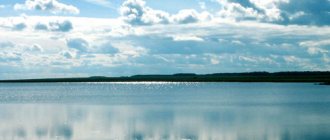Lake Khanka is located on the territory of two countries: Russia and China. On the map it has an interesting shape of an inverted pear with a tail. The narrow part of this “pear” is located in the center of the Prikhankai lowland, in the Primorsky Territory. Geographers believe that the size of Lake Khanka in the past was three times larger. It appeared as a result of enormous tectonic shifts. The size of Lake Khanka has been constantly changing, and this process is not yet finished.
Interestingly, the area of Lake Khanka cannot be determined by one constant number. In the rainy season it is more than 5,000 square kilometers, in the dry season it is less than 4,000.
Despite its large size, it is a relatively shallow body of water. The average depth of Lake Khanka is 4.5 meters, the maximum limit is just over ten meters.
Lake Khanka is replenished with the waters of twenty-four rivers, but only one flows out - Sungacha and further carries its waters to the Amur.
Interesting facts about Lake Khanka
Scientists have found that Lake Khanka appeared as a result of the merger of numerous rivers into one large body of water. For the first time, a water body in this territory was marked on French maps of the 18th century. The famous traveler V.K. Arsenyev found out that Lake Khanka was previously called Beiqing-hai, and now Xingkai-hu, which means “Lake of Prosperity and Prosperity.” Since 1971, the territory of the lake has the status of land of international importance.
On the shores of Lake Khanka, biologists count about seven hundred species of various plants and 322 species of algae. The water chestnut and the fearsome euryale, the rare beauty of the Komarov lotus, are recognized as unique and requiring protection. There is a beautiful legend associated with this flower. The young man Entoy fell in love with the beautiful Eina. The capricious girl demanded from Etnoy such a gift that no one had ever seen. After a long absence, the sad lover returned empty-handed. Besides Eina, there was another girl waiting for Entoy - Lota, who had loved him unrequitedly for a long time. To help her lover, she threw herself into the water of the lake and turned into a beautiful flower - a lotus. The young man tore it off and won the heart of the beautiful Eina. And since then, the pink lotus has bloomed every year on the muddy waters of Lake Khanka. The water does not brighten because it mourns the death of the devoted Lota. In some places you can see the grass - a rare snow-white water lily.
On the shores of Lake Khanka, floodplains often form - communities of different plant species that intertwine into a durable layer. Floods cover a significant part of the lake.
Aquatic fauna is another unique phenomenon of Lake Khanka. A large number of freshwater fish live in its depths. Ichthyologists count more than seventy species. There are very rare ones listed in the Red Book: black carp, black Amur bream, Chinese perch, killer whale and some others.
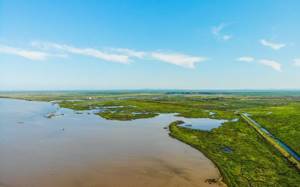
A rare fish lives here - the Anabass. It has a special respiratory organ and can move overland over short distances, and during drought it can survive in wet grass for more than three days.
Not everyone has heard about turtles on Lake Khanka. Yes, there are such freshwater soft-bodied inhabitants - Chinese trionix. These reptiles are small in size: on average, 20 - 25 centimeters, maximum - up to sixty. On the territory of our country, the Trionics, or Far Eastern turtle, lives only on Lake Khanka, and is also found in the Amur River.
Lake Khanka also attracted cultural figures with its unique properties and interesting history. Thus, Japanese director Akira Kurosawa filmed some episodes of the film “Dersu Uzala” here. The story about the lake was continued by Kurosawa's son, who was making a film about his famous father.
The creators of the Japanese animated series “Full Steel Alarm” chose the fictional state of Hanka as the setting for one of the episodes and “located” it approximately in the same place as the existing lake.
Geographical information
Khanka is the largest freshwater body of water in the Far East. Located in the center of the Khanka lowland. The predominant depths are 1-3 m, the greatest is 6.5 m. The volume of water is 18.3 km³. The catchment area is 18,400 km².
24 rivers flow into the lake, in particular Ilistaya, Melgunovka, Komissarovka; The Sungacha River flows out, a tributary of the Ussuri (Amur basin).
The northern part of the lake belongs to Chinese territory. The shape of the lake is pear-shaped with an expansion in its northern part. The surface area of water is not constant, it changes depending on climatic conditions. At maximum it reaches 5010 km², at minimum - 3940 km². The length of the lake is about 90 km, the greatest width is 67 km.
The villages of Turiy Rog, Platono-Aleksandrovskoye, Novokachalinsk and Kamen-Rybolov are located on the lake.
The water in the lake is cloudy, which is explained by frequent winds and, as a result, strong mixing. On average, the flow into the lake is 1.94 km³ per year, and from the lake about 1.85 km³. The lake freezes in the second half of November and opens in April.
The international Russian-Chinese Khanka Nature Reserve has been organized on the lake. The wetlands of the Lake Khanka basin are a unique natural complex. The Khanka lowland and, in fact, the shores of the lake are a rather swampy area.
Characteristic of Khanka are the so-called floodplains - plant communities formed by various types of sedges and cereals. They form a durable turf covering the water surface for many tens of square kilometers. Meadows (from swampy to steppe), meadow-forest, forest-steppe and steppe plant communities are represented here.
Recreation centers of Lake Khanka
The weather on Lake Khanka is favorable for travelers. The climate is monsoon. In winter there is little snow and dry. In summer it is hot and humid; the water temperature on Lake Khanka can reach +30 degrees. Constant strong winds blow, which attracts surfers to the pond.
At the end of November, the lake freezes, and ice fishing enthusiasts come here.
All this explains the large number of recreation centers on the shores of Lake Khanka. As a rule, they are all located on the more convenient western coast of the lake.
Recreation center Fortuna
The Fortuna recreation center is an excellent place for a family holiday on the shores of the legendary lake. You have a choice of four-bed houses with a cozy terrace or fully equipped rooms on the second floor of the cottage. The rooms have a fresh modern renovation, new furniture, plumbing, and electrical appliances.
Right on the shore of the lake there are gazebos with a barbecue area, tables and chairs (all included in the price). You can park your car at the recreation center next to the house.
The beach is on the territory of the base. Clean sand, flat bottom. Shallow depth, no holes or cliffs - an ideal place for families with children.
All conditions have been created for excellent fishing. The Fortuna recreation center is located in the village of Astrakhanka, not far from the village of Kamen-Rybolov.
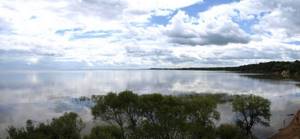
Recreation center Pioneer
The Pioneer recreation center welcomes lovers of active recreation all year round. Those arriving at the base are accommodated in furnished houses for 4 - 6 people or in small chalets for one or two tourists. The houses and chalets have everything you need for cooking, refrigerators, and dishes. Those who don't want to bother in the kitchen can always dine in a cafe.
For those who like to relax in a savage tent, there is a special area. You can rent all the necessary equipment. Sports equipment is also offered.
A special feature of a holiday at this base is the opportunity to go on a horseback excursion through the picturesque surroundings. Rent a boat for fishing or hunting.
Fans of gatherings will enjoy gazebos with barbecues and a Russian bathhouse. If fishing was unsuccessful, you can always buy fresh fish at the market next to the recreation center.
The Pioneer recreation center has its own convenient sandy beach. Cleanliness and order are constantly maintained here. In winter, fishing will be the main entertainment. You can rent all the necessary equipment.
Recreation center Troitskoye
The Troitskoye recreation center offers accommodation in 16 chalet houses designed for 2 to 4 people. The rooms have kettles, some have refrigerators (you need to check when booking). For cooking there is a shared kitchen with stoves, dishes, and a microwave. Products can be purchased in the village shops a five-minute walk from the recreation center. In addition to the houses, on the territory of the base there are gazebos of different capacities. Rental of barbecues is organized. The sanitary block has toilets and showers.
You can come to Troitskoye with pets. Parking for cars is provided.
For a beach holiday, the administration of the base offers catamarans, boats, bananas. For fishing lovers - fishing rods. Children will enjoy taking a ride into the water from an inflatable slide. On the territory of the Troitskoye recreation center there are all conditions for savages to relax: a specially equipped area for placing tents, rental of tourist equipment.
About the status of the area
The world of animals and vegetation of Lake Khanka and its surroundings is surprisingly diverse. In accordance with the Ramsar Convention, in 1971 this unique wetland was given the status of sites of international importance.
In 1990, the Khankai State Nature Reserve was organized in the Khankai Lake basin. April 1996 was marked by the signing between the Governments of the People's Republic of China and the Russian Federation of an agreement on the creation of an international Russian-Chinese protected area "Lake Khanka" on the basis of two reserves (Russian Khanka and Chinese "Xingkai-Hu").
Fishing on Lake Khanka
According to numerous reviews, Lake Khanka is a paradise for fishermen. More than seventy species of fish live here. But not everyone can be caught. There is a list of species prohibited from harvesting. They are listed in the Red Book. These are sturgeon, Chinese perch, black Amur bream, Soldatov's catfish, killer whale, kaluga, yellowfin, black carp.
However, the species allowed for fishing are quite enough for the happiness of the fisherman. What kind of fish is caught most often:
- pike;
- carp;
- crucian carp;
- silver carp;
- bleak;
- White amur;
- zander;
- rudd;
- snakehead and others.
In total there are more than twenty commercial species. To catch Red Book fish, you need to buy a license.
Fishing on Lake Khanka is possible anywhere on the coast, but it has its own characteristics. The time of year when you go to the lake is of great importance. It should be noted that fishing is prohibited from April 20 to July 20, when the fish spawn.
From July to August it is recommended to go to Eriki for fish. This is the local name for narrow, swampy, fast-flowing streams. Here, with a fly, skimmers and three-lipped fish are excellently caught. Earthworms are also used.
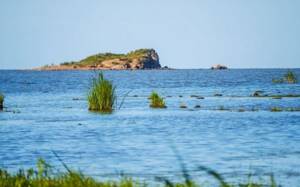
Quite large rudd are caught at the mouths of numerous rivers flowing into the lake.
At the beginning of autumn, many fry accumulate near the shores, which attract predators: pike, leopard, and pike perch. Wobblers and flies are used as bait. Bright lures work well for muddy lake waters. According to fishermen, in the evening you can catch quite large catfish.
Beginning fishermen are often interested in the question of what gear they use to fish on Lake Khanka. Most often it is a donka, a spinning rod, or a float. In deep areas, pike and pike perch are caught using a spinning rod with a spinning reel. Bleak, white bream, and rudd work well on a float rod at medium depths. When catching crucian carp, it is advisable to use fertilizer - purchased or homemade dough. Float and bottom gear are convenient to use if you combine fishing and relaxation with your family. Fishing in the lake is excellent, even if there is a beach next door.
Fishing from a boat will be more successful. It must be remembered that a watercraft with a motor requires registration and documents. With a rubber boat you can fish unhindered anywhere in the lake.
Rosrybolovstvo inspectors strictly monitor compliance with the law. It is allowed to use gear with no more than 10 hooks. There are restrictions on the size of the fish caught: pike - no less than 35 centimeters, silver carp - no less than 40. You can catch no more than five kilograms of fish per day. Moreover, if you are lucky and you catch one such large fish, you will have to stop fishing.
Winter fishing on Khanka is also very popular. By the end of November the lake is covered with solid ice. Many lovers go to the lake directly by car.
Fishermen get their biggest catch at the end of March, when the ice begins to thaw. The recommended bait for winter fishing is a jig.
↑ Fauna and flora
From crucian carp to giant kaluga, Khanka has been famous since ancient times for the abundance and quality of its fish, which were supplied to the imperial tables. The lake is still of interest to fishermen today, who can fish almost all year round.
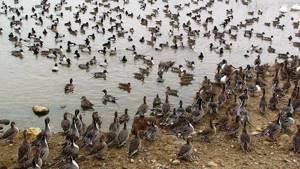
bird colonies on Lake Khanka photo
Ichthyologists here count 75 species of fish, two dozen of which are considered commercial. Amur catfish, grass carp, snakehead, crucian carp, Mongolian rudd, carp, silver carp and other fish are found here. In the lake there is a huge fish called kaluga.
In addition to fish, the fauna of the lake is rich and diverse. It is known as a place for bird nesting and seasonal migration of birds. Up to 350 thousand river ducks, 130 thousand geese and 3-5 thousand swans stop here every year to rest. In total, over three hundred species of birds have been registered in the reserve, which makes it one of the leaders in Eurasia in terms of this indicator.
More than 40 species of mammals live here, as well as rare amphibians and seven species of reptiles, including the Far Eastern tortoise. Many of the animals living near the lake are listed in the Red Book.

Lake Khanka photo
Lake Khanka is a unique complex combining vast expanses of water and wetlands. The water in it is cloudy as a result of intense mixing of water by frequent winds. When water levels fluctuate, the area of the water area can change up to 17%, and the volume of water up to 39%. Its shores are composed of grassy swamps, reed beds and shallow lakes. Various plant species produce floodplains that form a durable turf covering tens of square kilometers of water. The result is meadows with different characteristics.
